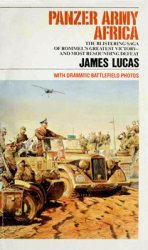¦ Which factors perhaps promoted racial equality among ranch hands?
¦ Which elements of Love's story ring true and which seem improbable?
Commission. “That accounts for my ranch being where it is. The next water from me in one direction is 23 miles; now no man can have a ranch between these two places. I have control of the grass, the same as though I owned it.” By having his cowhands take out homestead claims along watercourses in his region, a rancher could greatly expand the area he dominated. In the late 1870s one Colorado cattle baron controlled an area roughly the size of Connecticut and Rhode Island even though he owned only 105 small parcels that totaled about 15,500 acres.
With the demand for meat rising and transportation cheap, princely fortunes could be made in a few years. Capitalists from the East and from Europe began to pour funds into the business. Eastern “dudes” like Theodore Roosevelt, a young New York assemblyman who sank over $50,000 in his Elkhorn Ranch in the Dakota Territory in 1883, bought up cattle as a sort of profitable hobby. (Roosevelt, clad in buckskin and bearing a small armory of rifles and six-shooters, made quite a splash in Dakota, but not as a rancher.) Soon large outfits such as the Nebraska Land and Cattle Company, controlled by British investors, and the Union Cattle Company of Wyoming, a $3 million corporation, dominated the business, just as large companies had taken over most of the important gold and silver mines.
Unlike other exploiters of the West’s resources, cattle ranchers did not at first injure or reduce any public resource. Grass eaten by their stock annually renewed itself; droppings from the animals enriched the soil. Furthermore, ranchers poached on the public domain because there was no reasonable way for them to obtain legal possession of the large areas necessary to raise cattle on the plains. Federal land laws made no allowance for the special conditions of the semiarid West.
A system to take account for those conditions was soon devised by Major John Wesley Powell, later the director of the United States Geological Survey. His Report on the Lands of the Arid Region of the United States (1879) suggested that western lands be divided into three classes: irrigable lands, timber lands, and “pasturage” lands. On the pasturage lands the “farm unit” ought to be at least 2,560 acres (four sections), Powell urged. Groups of these units should be organized into “pasturage districts” in which the ranchers “should have the right to make their own regulations for the division of lands, the use of the water. . . and for the pasturage of lands in common or in severalty.”




 World History
World History









